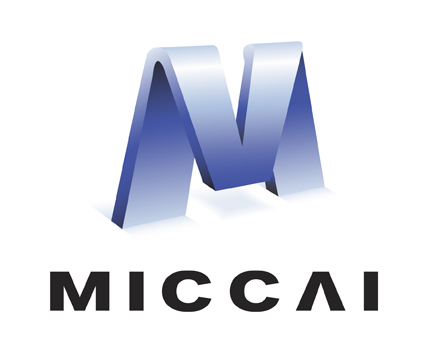Abstract
Semantic segmentations of pathological entities have crucial clinical value in computational pathology workflows. Foundation models, such as the Segment Anything Model (SAM), have been recently proposed for universal use in segmentation tasks. SAM shows remarkable promise in instance segmentation on natural images. However, the applicability of SAM to computational pathology tasks is limited due to the following factors: (1) lack of comprehensive pathology datasets used in SAM training and (2) the design of SAM is not inherently optimized for semantic segmentation tasks. In this work, we adapt SAM for semantic segmentation by first introducing trainable class prompts, followed by further enhancements through the incorporation of a pathology encoder, specifically a pathology foundation model. Our framework, SAM-Path enhances SAM’s ability to conduct semantic segmentation in digital pathology without human input prompts. Through extensive experiments on two public pathology datasets, the BCSS and the CRAG datasets, we demonstrate that the fine-tuning with trainable class prompts outperforms vanilla SAM with manual prompts by 27.52% in Dice score and 71.63% in IOU. On these two datasets, the proposed additional pathology foundation model further achieves a relative improvement of 5.07% to 5.12% in Dice score and 4.50% to 8.48% in IOU.
Access this chapter
Tax calculation will be finalised at checkout
Purchases are for personal use only
Similar content being viewed by others
References
Amgad, M., et al.: Structured crowdsourcing enables convolutional segmentation of histology images. Bioinformatics 35(18), 3461–3467 (2019)
Chen, R.J., et al.: Scaling vision transformers to gigapixel images via hierarchical self-supervised learning. In: Proceedings of the IEEE/CVF Conference on Computer Vision and Pattern Recognition (CVPR), June 2022, pp. 16144–16155 (2022)
Deng, R., et al.: Segment anything model (SAM) for digital pathology: assess zero-shot segmentation on whole slide imaging. arXiv preprint arXiv:2304.04155 (2023)
Ding, R., et al.: Image analysis reveals molecularly distinct patterns of TILs in NSCL associated with treatment outcome. npj Precis. Oncol. 6(1), 33 (2022)
Graham, S., et al.: MILD-Net: minimal information loss dilated network for gland instance segmentation in colon histology images. Med. Image Anal. 52, 199–211 (2019)
Gurcan, M.N., Boucheron, L.E., Can, A., Madabhushi, A., Rajpoot, N.M., Yener, B.: Histopathological image analysis: a review. IEEE Rev. Biomed. Eng. 2, 147–171 (2009)
Jia, M., et al.: Visual prompt tuning. In: Avidan, S., Brostow, G., Cisse, M., Farinella, G.M., Hassner, T. (eds.) Computer Vision, ECCV 2022. LNCS, vol. 13693. Springer, Cham (2022). https://doi.org/10.1007/978-3-031-19827-4_41
Kapse, S., Torre-Healy, L., Moffitt, R.A., Gupta, R., Prasanna, P.: Subtype-specific spatial descriptors of tumor-immune microenvironment are prognostic of survival in lung adenocarcinoma. In: 2022 IEEE 19th International Symposium on Biomedical Imaging (ISBI), pp. 1–5. IEEE (2022)
Kirillov, A., et al.: Segment anything. arXiv preprint arXiv:2304.02643 (2023)
Komura, D., Ishikawa, S.: Machine learning methods for histopathological image analysis. Comput. Struct. Biotechnol. J. 16, 34–42 (2018)
Lingle, W., et al.: Radiology data from the cancer genome atlas breast invasive carcinoma (TCGA-BRCA) collection. Cancer Imaging Arch. 10, K9 (2016)
Litjens, G., et al.: A survey on deep learning in medical image analysis. Med. Image Anal. 42, 60–88 (2017)
Lu, C., et al.: Feature-driven local cell graph (FLocK): new computational pathology-based descriptors for prognosis of lung cancer and HPV status of oropharyngeal cancers. Med. Image Anal. 68, 101903 (2021)
Madabhushi, A., Lee, G.: Image analysis and machine learning in digital pathology: challenges and opportunities. Med. Image Anal. 33, 170–175 (2016)
Niazi, M.K.K., Parwani, A.V., Gurcan, M.N.: Digital pathology and artificial intelligence. Lancet Oncol. 20(5), e253–e261 (2019)
Pantanowitz, L., et al.: Validating whole slide imaging for diagnostic purposes in pathology: guideline from the college of American pathologists pathology and laboratory quality center. Arch. Pathol. Lab. Med. 137(12), 1710–1722 (2013)
Tizhoosh, H.R., Pantanowitz, L.: Artificial intelligence and digital pathology: challenges and opportunities. J. Pathol. Inf. 9(1), 38 (2018)
Weinstein, J.N., et al.: The cancer genome atlas Pan-Cancer analysis project. Nat. Genet. 45(10), 1113–1120 (2013)
Zhang, J., et al.: Prompt-MIL: boosting multi-instance learning schemes via task-specific prompt tuning. arXiv preprint arXiv:2303.12214 (2023)
Zhang, J., et al.: Precise location matching improves dense contrastive learning in digital pathology. In: Frangi, A., de Bruijne, M., Wassermann, D., Navab, N. (eds.) Information Processing in Medical Imaging, IPMI 2023. LNCS, vol. 13939, pp. 783–794. Springer, Cham (2023). https://doi.org/10.1007/978-3-031-34048-2_60
Author information
Authors and Affiliations
Corresponding author
Editor information
Editors and Affiliations
1 Electronic supplementary material
Below is the link to the electronic supplementary material.
Rights and permissions
Copyright information
© 2023 The Author(s), under exclusive license to Springer Nature Switzerland AG
About this paper
Cite this paper
Zhang, J. et al. (2023). SAM-Path: A Segment Anything Model for Semantic Segmentation in Digital Pathology. In: Celebi, M.E., et al. Medical Image Computing and Computer Assisted Intervention – MICCAI 2023 Workshops . MICCAI 2023. Lecture Notes in Computer Science, vol 14393. Springer, Cham. https://doi.org/10.1007/978-3-031-47401-9_16
Download citation
DOI: https://doi.org/10.1007/978-3-031-47401-9_16
Published:
Publisher Name: Springer, Cham
Print ISBN: 978-3-031-47400-2
Online ISBN: 978-3-031-47401-9
eBook Packages: Computer ScienceComputer Science (R0)






